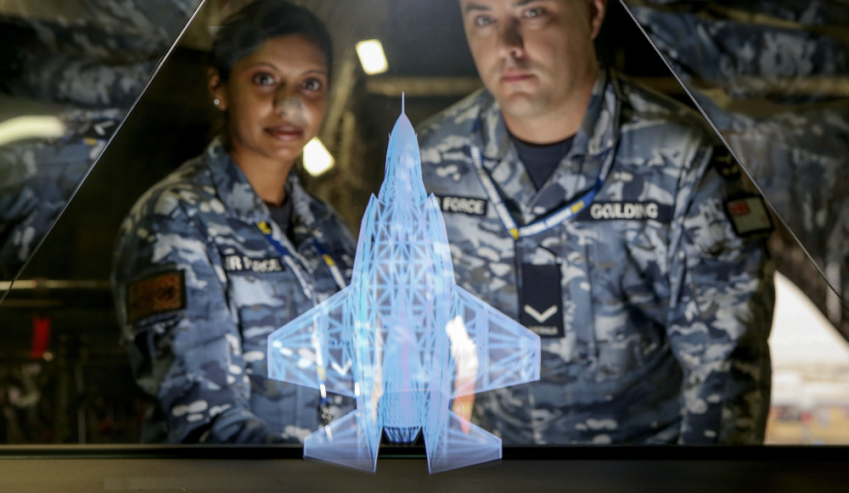AIR 6500 is billed not only as a game changer for the Air Force, but for the entire ADF and the way in which it operates as a ‘joint force’ independently and co-operatively with allies in the 21st century.
To continue reading the rest of this article, please log in.
Create free account to get unlimited news articles and more!
As the nature of defence platforms grow more and more complex and integrated, the need to successfully, rapidly and reliably absorb, analyse and disseminate data throughout multi-domain platforms and systems is becoming increasingly critical.
The arrival of key, next-generation platforms like the F-35 Joint Strike Fighter, E-7A Wedgetail, P-8A Poseidon, Hobart Class and Hunter Class into ADF service is transforming the way the ADF conducts independent and coalition operations. Recognising this, both Defence and government have sought to adapt and reshape the ADF into a potent, flexible and adaptable force for the future.
The Royal Australian Air Force’s vision is to transform into a fully networked, fifth-generation force able to prevail against the increasingly complex and lethal threats of warfare in the information age.
Key to this vision is AIR 6500, a joint battle management system that will interconnect the many disparate platforms, systems and sensors across the air, land space, electromagnetic and cyber domains into a collaborative environment that provides shared situational awareness of the battlespace and the ability to rapidly plan responses to threats.
As part of the rapidly developing project profile, Defence Connect drew together thought and industry leaders to discuss the future of Australia's 'networked' and 'joint' force doctrines, the technologies and the capabilities that would enable the ADF to continue to promote and defend the nation and its interests into the future.
The program has drawn together individual companies including Northrop Grumman, Lockheed Martin, Boeing and Raytheon to develop and implement a multi-domain battle management (MDBM) and integrated air and missile defence system (IAMD) to enable the 'joint force' force structure, operating doctrine and concept.
Malcolm Davis, senior analyst at ASPI, highlighted to Defence Connect the importance of leveraging and integrating key platforms as a "system of systems", saying, "The fifth-generation force has to be capable of operating across, land, sea, air, cyber, EM and space, and that is a core component of the transition to the joint force. We have to systems of systems, not just stovepipe platforms that are capable of connecting across a network and that is what is driving the AIR 6500 Integrated Battle Management program."
The challenge laid down to industry by the RAAF and government has been taken up enthusiastically by industry keen to be at the cutting-edge of capability delivery, particularly given the opportunity to establish a paradigm-shifting integrated, multi-domain combat and battle management system, capable of air and missile defence for a force as technologically advanced as the Australian Defence Force.
"I would applaud the efforts the RAAF has taken and is continuing to embark on as part of Jericho. It is important to develop these capabilities organically in country, which imparts a degree of trust and enables us to open export opportunities, leveraging the expertise and experience we in Australia develop in such a lean operating environment," Simon Cooper, global business development director, Northrop Grumman Mission Systems, explained to Defence Connect.
This focus on developing organic, in country, customer-focused solutions to the operational, strategic and industrial challenges to implementing such a transformational capability is a critical focus for the contenders, particularly Northrop Grumman, with Cooper explaining the importance of robust dialogue and relationships between industry and Defence as the customer.
"Regardless of the country you have to listen to the customer, it is about understanding what the customer wants to achieve, no one industry partner can deliver the capability, you have to draw on expertise, experience and capabilities from industry, academia, uniformed personnel and government," he said.
The AIR 6500 Project presents an opportunity for Australian industry to participate in an exciting and strategically important program to build and maintain an enduring and regionally superior Australian capability with an opportunity to enter export markets.
The ADF's existing air defence systems will be upgraded or replaced by Project AIR 6500. This investment will provide the foundation for an enhanced integrated air and missile defence system for the ADF, ensuring that the delivered system is able to fuse and share information to enhance the accuracy and speed of ADF's systems response to air and missile threats. The delivered architecture will have the flexibility for further enhancement to handle more complex threats and to integrate new technologies as they emerge.
The ADF will also acquire ground-based active electronically scanned array radars from around 2020 and expand Australia's access to air and space situational awareness information, including through space-based systems.
A solicitation to industry is expected in 2019. Contract signature for the successful prime systems integrator and system deliverer will be in 2020 with an initial capability fielded by 2024.

 Login
Login







